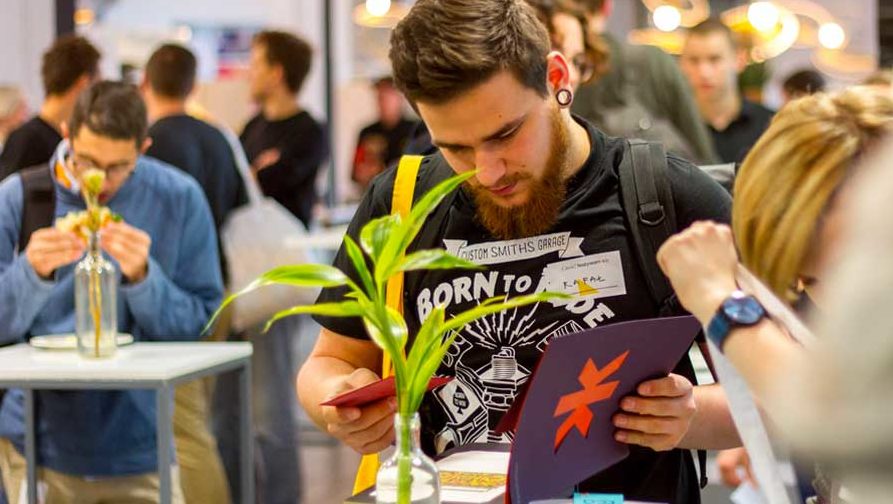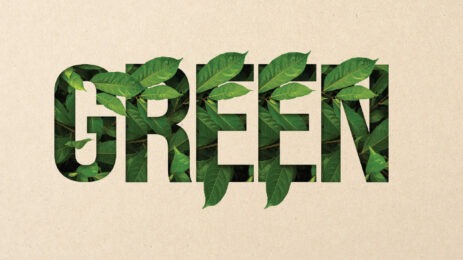What will live events look like after COVID-19 pandemic has passed? The coronavirus that has shut down the live events industry is likely to have some lasting impacts even after cases and concerns decline.
More: 10 Sustainable AND Hygienic Ideas for the Post-Corona MICE World
Attendees may prefer smaller events, with more physical space; the “social distancing” habit will take time to break. There will likely be less interest in activities that involve any kind of direct physical contact—even shaking hands.
But once the pandemic is behind us, some of the big trends predicted for the industry in late 2019 and early 2020 will regain importance. Real action on sustainability was predicted to be one of the biggest trends if not the biggest change for events this year, before coronavirus.
See also: On Earth Day’s 50th, ‘Travel’ at Home
Research by PromoLeaf, conducted in February just before the industry shutdown, strongly supports that. The PromoLeaf study found that 60 percent of respondents prefer attending conferences hosted using sustainable practices, with more than a quarter strongly preferring such conferences.
Here are more key findings from the research.
Most Popular Swag

On a multiple-choice question, pens (60 percent), water bottles (59 percent), and notebooks (really, 58 percent for notebooks?!) are the top three swag items event attendees are most interested in receiving from vendors. Surprisingly, these figures are even higher (65 percent, 69 percent, and 64 percent, respectively) among those in the 25-34 age bracket.
Tote bags were the fourth-most desired item—presumably to help carry those pens, water bottles, and notebooks. Interestingly, even pre-coronavirus, more than half of respondents said hand sanitizer was on their most-wanted list; 55 percent of 25-34 year-olds chose this, as did 54 percent in the 45-54 age group.
Among who chose “Other” and provided a freeform text answer to this question, results were a bit different, as shown in this wordcloud. Gift cards, note pads, flash drives, t-shirts, travel mugs—and most intriguingly wine bottle openers topped the list.
Note that the words “healthy,” “eco,” and “sustainable” also figure prominently.
See also: Your Sustainable April Smart Style
The bottom line? Keep sustainability in mind when deciding what swag (if any) to give away at your post-coronavirus events:
- Consider replacing swag completely with unique experiences (though, interestingly, only 4 percent of respondents overall said they would prefer not to receive any swag, with the largest share—8 percent—in the 55-and-over age group).
- If you’re going to give things away, think about items that are small, practical and with a long life-in-use such as flash drives and travel mugs.
- A healthy snack in recyclable packaging is also a good choice.
- Forget the stress balls, toys and keychains.
Eco-Friendly Dining
Overall, 54 percent of respondents said it matters to them if conference organizers incorporate “eco-friendly dining practices, such as compostable dishware and/or locally sourced menus, into the event.”
However, responses varied widely by age group. Some 63 percent in the 25-34 age bracket, and a whopping 68 percent of those under 25, consider this important. But barely half of respondents in 45-54 age cohort, and just 38 percent of those over 55, agree.
So, as with many other choices about your event, consider your audience first when making decisions about dining practices and options.
Where Unwanted Swag Goes
When asked what they do with swag items they don’t want or can’t use, almost half, 45 percent of respondents overall said they donate those items and 32 percent re-gift them, while 15 percent simply throw them in the trash. But the differences in responses between age groups are again interesting:
- Respondents over age 55 were most likely (51 percent) to donate unwanted swag.
- Those in the 35-44 age group were most inclined (35 percent) to re-gift such items.
- Attendees 25-34 years old were most apt (22 percent) to discard unwanted tchotchkes. More than 20 percent of those under 25 also chose this answer. The group least likely to discard unneeded trinkets? The over-55 crowd, at 9 percent. Go figure.
Preference for Sustainable Event Practices

As alluded to above, 60 percent of respondents prefer to attend conferences “hosted in a sustainable fashion,” and 27 percent strongly prefer this. But, once again, the demographic differences in answers are noteworthy:
- Respondents in the 25-34 year old (34 percent) and 35-44 age group (35 percent) were mostly likely to “strongly prefer” events using sustainable practices.
- Those under the age of 35 were most likely (68 percent) to prefer or strongly prefer sustainable event practices while those over 45 were least likely (though still 53 percent).
- The older age cohorts were more likely to be indifferent about such practices, but more striking is the gender difference: regardless of age, women were more likely than men (41 percent to 32 percent) to express indifference about sustainable events.
The Bottom Line
An increased focus on sustainable event practices was a major trend coming into 2020. As the industry emerges from coronavirus-caused shutdown, concern for the health of the planet, and even more importantly the health of attendees, will only increase.
So, as you plan your post-COVID-19 events, look at how you can incorporate sustainability into your events. Plan for smaller events when possible, eliminate or get smart with your giveaways, and seek out unique venues.
Most cortically, keep the health of attendees in mind. Go with fresh, healthy, locally-sourced food whenever possible; offer healthy snacks; and provide adequate space for participants still transitioning away from social distancing habits.
Tom Pick is a digital marketing consultant who works with event management platform developer G2Planet to share the company’s insights and knowledge with corporate event marketing professionals.




